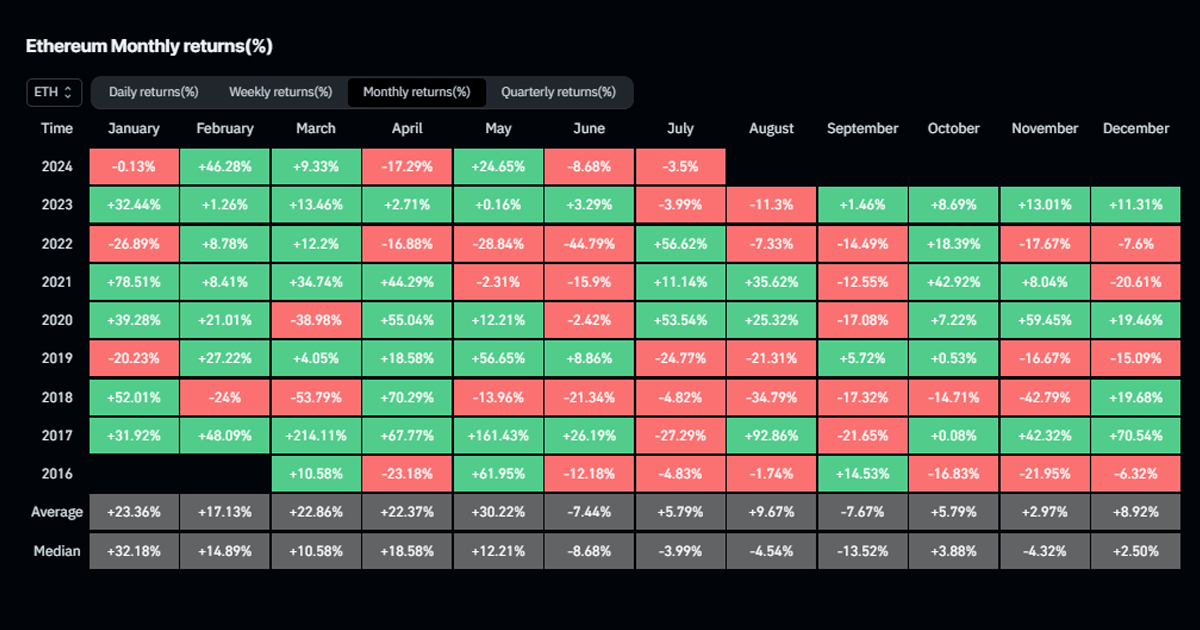Ethereum
What are Blobs? Improving Ethereum Scalability

Officially presented at the Ethereum network on March 13, 2024 in the Dencun upgradeblobs are a new type of data storage space designed to create rollups cheaper and more efficient.
The consensus within the Ethereum community is that the best way to scale Ethereum is through rollups, also known as Layer 2 or L2, and that the best way to scale rollups is through the introduction of blobs.
Before blobs, if Ethereum went through a period of congestion, it would also affect the price of transactions on all of its layers 2. The introduction of blobs removes the correlation between Ethereum’s congestion and the cost of transactions on layers 2.
Blobs are a new data structure introduced to Ethereum in EIP-4844, more colloquially referred to as “Proto-danksharding“. EIP stands for Ethereum Improvement Proposal, the process by which Ethereum’s core developers suggest improvements to Ethereum.
Proto-danksharding is the precursor to full-danksharding and lays the foundations by introducing blobs. It does this in the same format in which they will be used when full-danksharding is implemented, in order to simplify the transition to full-danksharding.
Full-danksharding, or simply Danksharding, is an upcoming update to the Ethereum protocol. This represents what Ethereum’s core developers believe is the final step (for now) in making Ethereum a truly scalable blockchain, making transactions faster and cheaper.
Proto-danksharding is a step towards implementing Danksharding: it introduces Danksharding concepts, such as blobs, into Ethereum. Starting with proto-danksharding and introducing blobs, instead of diving straight into full danksharding, reduces the risk created by introducing drastic changes to a network too quickly.
Before blobs, when a layer 2 needed to verify its transactions, it would batch them together and send them to layer 1 (Ethereum) for verification. The problem was that once the data was verified, it would remain stuck on the Ethereum blockchain, taking up block space, forever.
This contributes to state congestion and makes Ethereum more congested, which in turn has also made layer 2s more congested.
With blobs, when data is sent to Layer 1 for verification, it is sent in a blob, short for Binary Large Object. Each blob has 4,096 field elements and can hold up to 32 bytes of data per field element, which equates to about 75 MB per blob. You can think of it as a giant array of data, or… a big blob of data.
Blobs improve on the previous method of data verification in that once data is verified from a blob, it can be deleted. This way, all transaction data for every rollup built on Ethereum does not need to permanently reside on the Ethereum blockchain, taking up valuable space.
Blobs also operate using a separate blob fee market, introducing “blob gas.” Blob gas is independent of gas on the Ethereum mainnet, meaning the only things that use blob gas are the blobs themselves.
Despite the funny names associated with Ethereum’s Dencun upgrade, it’s a serious improvement. Blobs help make Ethereum less congested, and they make rollups cheaper and faster to use.
Indeed, data checked in blobs can be deleted after use. As such, this does not cause state bloat on the Ethereum mainnet. “State bloat” refers to the fact that the more data that Ethereum processes, the more data resides permanently on its blockchain – and the more intensive the maintenance of the “state” of that network becomes.
The separation of the blob gas market from the existing gas market is also a notable improvement. Since blobs have a separate gas market, congestion on Ethereum does not affect them. In the past, if there was a major event on Ethereum, such as a highly anticipated event, NFT At the mint, the congestion caused by this event would leak into Layer 2 and make transactions more expensive there as well. Separating the blob gas markets from traditional Ethereum gas markets removes the correlation between Ethereum network congestion and Layer 2 transaction costs and speeds.
Blobs also make layer 2s much more cost effective. Before blobs, when gas fees were correlated with Ethereum network congestion, the cost of running Layer 2s and Dapps built on them was much higher. Reducing transaction fees allows manufacturers and operators to manage complex smart contracts or products at a fraction of the cost.
Let’s look at the on-chain data of rollup.wtfwe can see that the majority of layer 2s with the most transactions per second are already using blobs.
In a TweeterJesse Pollak, founder of the Layer 2 Base network, revealed that after Dencun, the cost of a simple exchange transaction on Base increased from $0.31 to $0.0005.
However, it hasn’t all been rosy. Blobs have been slower than expected when it comes to publishing transactions to Layer 1. The creation of a new gas market for blobs has successfully decoupled Ethereum’s congestion from the transaction costs of accumulating them, but the gas market itself needs some polishing before it’s all it’s cracked up to be.
In an example in June 2024, blob transactions became more expensive than their predecessor – but this can be seen as a sign that blob adoption is still happening and hopefully as L2s become more efficient in using blobs, more block builders will start accepting blocks that include blobs and as blob capacity increases – costs will come down.
Vitalik Buterin addressed these two questions in a March 2023 blog post published shortly after Dencun was released. In it, Buterin cites two key areas of focus that are needed to continue evolving blobs: “Incrementally increasing blob capacity, eventually realizing the full vision of sample data availability with 16MB per data space slot” and “Improving Tier 2s to make better use of the data space we have.”
So while the blobs have had some growing pains, they were mostly anticipated and solutions are underway.
Ethereum
QCP sees Ethereum as a safe bet amid Bitcoin stagnation

QCP, a leading trading firm, has shared key observations on the cryptocurrency market. Bitcoin’s struggle to surpass the $70,000 mark has led QCP to predict Selling pressure is still strong, with BTC likely to remain in a tight trading range. In the meantime, Ethereum (ETH) is seen as a more promising investment, with potential gains as ETH could catch up to BTC, thanks to decreasing ETHE outflows.
Read on to find out how you can benefit from it.
Bitcoin’s Struggle: The $70,000 Barrier
For the sixth time in a row, BTC has failed to break above the $70,000 mark. Bitcoin is at $66,048 after a sharp decline. Many investors sold Bitcoin to capitalize on the rising values, which caused a dramatic drop. The market is becoming increasingly skeptical about Bitcoin’s rise, with some investors lowering their expectations.
Despite the continued sell-off from Mt. Gox and the US government, the ETF market remains bullish. There is a notable trend in favor of Ethereum (ETH) ETFs as major bulls have started investing in ETFs, indicating a bullish sentiment for ETH.
QCP Telegram Update UnderlinesIncreased market volatility. The NASDAQ has fallen 10% from its peak, led by a pullback in major technology stocks. Currency carry trades are being unwound and the VIX, a measure of market volatility, has jumped to 19.50.
The main factors driving this uncertainty are Value at Risk (VaR) shocks, high stock market valuations and global risk aversion sentiment. Commodities such as oil and copper have also declined on fears of an economic slowdown.
Additionally, QCP anticipates increased market volatility ahead of the upcoming FOMC meeting, highlighting the importance of the Federal Reserve’s statement and Jerome Powell’s subsequent press conference.
A glimmer of hope
QCP notes a positive development in the crypto space with an inflow of $33.7 million into ETH spot ETFs, which is giving a much-needed boost to ETH prices. However, they anticipate continued outflows of ETHE in the coming weeks. The recent Silk Road BTC moves by the US government have added to the market uncertainty.
QCP suggests a strategic trade involving BTC, which will likely remain in its current range, while ETH offers a more promising opportunity. They propose a trade targeting a $4,000-$4,500 range for ETH, which could generate a 5.5x return by August 30, 2024.
Ethereum
Ethereum Whale Resurfaces After 9 Years, Moves 1,111 ETH Worth $3.7 Million

An Ethereum ICO participant has emerged from nearly a decade of inactivity.
Lookonchain, a smart on-chain money tracking tool, revealed On X, this long-inactive participant recently transferred 1,111 ETH, worth approximately $3.7 million, to a new wallet. This significant move marks a notable on-chain movement, given the participant’s prolonged dormancy.
The Ethereum account in question, identified as 0xE727E67E…B02B5bFC6, received 2,000 ETH on the Genesis block over 9 years ago.

This initial allocation took place during the Ethereum ICOwhere the participant invested in ETH at around $0.31 per coin. The initial investment, worth around $620 at the time, has now grown to millions of dollars.
Recent Transactions and Movements
The inactive account became active again with several notable output transactions. Specifically, the account transferred 1,000 ETH, 100 ETH, 10 ETH, 1 ETH, and 1 more ETH to address 0x7C21775C…2E9dCaE28 within a few minutes. Additionally, it moved 1 ETH to 0x2aa31476…f5aaCE9B.
Additionally, in the latest round of transactions, the address transferred 737,995 ETH, 50 ETH, and 100 ETH, for a total of 887,995 ETH. These recent activities highlight a significant movement of funds, sparking interest and speculation in the crypto community.
Why are whales reactivating?
It is also evident that apart from 0xE727E67E…B02B5bFC6, other previously dormant Ethereum whales are waking up with significant transfers.
In May, another dormant Ethereum whale made headlines when it staked 4,032 ETHvalued at $7.4 million, after more than two years of inactivity. This whale initially acquired 60,000 ETH during the Genesis block of Ethereum’s mainnet in 2015.
At the time, this activity could have been related to Ethereum’s upgrade known as “Shanghai,” which improved the network’s scalability and performance. This whale likely intended to capitalize on the price surge that occurred after the upgrade.
Disclaimer: This content is informational and should not be considered financial advice. The opinions expressed in this article may include the personal opinions of the author and do not reflect the opinion of The Crypto Basic. Readers are encouraged to conduct thorough research before making any investment decisions. The Crypto Basic is not responsible for any financial losses.
-Advertisement-
Ethereum
Only Bitcoin and Ethereum are viable for ETFs in the near future

BlackRock: Only Bitcoin and Ethereum Are Viable for ETFs in the Near Future
Bitcoin and Ethereum will be the only cryptocurrencies traded via ETFs in the near future, according to Samara Cohen, chief investment officer of ETFs and indices at BlackRock, the world’s largest asset manager.
In an interview with Bloomberg TV, Cohen explained that while Bitcoin and Ethereum have met BlackRock’s rigorous criteria for exchange-traded funds (ETFs), no other digital asset currently comes close. “We’re really looking at the investability to see what meets the criteria, what meets the criteria that we want to achieve in an ETF,” Cohen said. “Both in terms of the investability and from what we’re hearing from our clients, Bitcoin and Ethereum definitely meet those criteria, but it’s going to be a while before we see anything else.”
Cohen noted that beyond the technical challenges of launching new ETFs, the demand for other crypto ETFs, particularly Solana, is not there yet. While Solana is being touted as the next potential ETF candidate, Cohen noted that the market appetite remains lacking.
BlackRock’s interest in Bitcoin and Ethereum ETFs comes after the successful launch of Ethereum ETFs last week, which saw weekly trading volume for the crypto fund soar to $14.8 billion, the highest level since May. The success has fueled speculation about the next possible ETF, with Solana frequently mentioned as a contender.
Solana, known as a faster and cheaper alternative to Ethereum, has been the subject of two separate ETF filings in the US by VanEck and 21Shares. However, the lack of CME Solana futures, unlike Bitcoin and Ethereum, is a significant hurdle for SEC approval of a Solana ETF.
Despite these challenges, some fund managers remain optimistic about Solana’s potential. Franklin Templeton recently described Solana as an “exciting and major development that we believe will drive the crypto space forward.” Solana currently accounts for about 3% of the overall cryptocurrency market value, with a market cap of $82 billion, according to data from CoinGecko.
Meanwhile, Bitcoin investors continue to show strong support, as evidenced by substantial inflows into BlackRock’s iShares Bitcoin Trust (NASDAQ: IBIT). On July 22, IBIT reported inflows of $526.7 million, the highest single-day total since March. This impressive haul stands in stark contrast to the collective inflow of just $6.9 million seen across the remaining 10 Bitcoin ETFs, according to data from Farside Investors. The surge in IBIT inflows coincides with Bitcoin’s significant $68,000 level, just 8% off its all-time high of $73,000.
Ethereum
Ethereum Posts First Consecutive Monthly Losses Since August 2023 on New ETFs

Available exclusively via
Bitcoin ETF vs Ethereum: A Detailed Comparison of IBIT and ETHA
Andjela Radmilac · 3 days ago
CryptoSlate’s latest market report takes an in-depth look at the technical and practical differences between IBIT and BlackRock’s ETHA to explain how these products work.
-

 Ethereum12 months ago
Ethereum12 months agoEthereum Posts First Consecutive Monthly Losses Since August 2023 on New ETFs
-

 Regulation11 months ago
Regulation11 months agoCryptocurrency Regulation in Slovenia 2024
-

 News12 months ago
News12 months agoNew bill pushes Department of Veterans Affairs to examine how blockchain can improve its work
-

 Regulation11 months ago
Regulation11 months agoThink You Own Your Crypto? New UK Law Would Ensure It – DL News
-

 Regulation12 months ago
Regulation12 months agoUpbit, Coinone, Bithumb Face New Fees Under South Korea’s Cryptocurrency Law
-

 Regulation11 months ago
Regulation11 months agoA Blank Slate for Cryptocurrencies: Kamala Harris’ Regulatory Opportunity
-

 Regulation12 months ago
Regulation12 months agoBahamas Passes Cryptocurrency Bill Designed to Prevent FTX, Terra Disasters
-

 Regulation12 months ago
Regulation12 months agoIndia to Follow G20 Policy for Cryptocurrency Regulation: MoS Finance
-

 Ethereum1 year ago
Ethereum1 year agoComment deux frères auraient dérobé 25 millions de dollars lors d’un braquage d’Ethereum de 12 secondes • The Register
-

 News1 year ago
News1 year ago“Captain Tsubasa – RIVALS” launches on Oasys Blockchain
-

 News12 months ago
News12 months agoEU supports 15 startups to fight online disinformation with blockchain
-

 News1 year ago
News1 year agoSolana ranks the fastest blockchain in the world, surpassing Ethereum, Polygon ⋆ ZyCrypto





